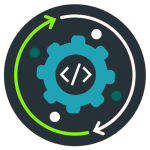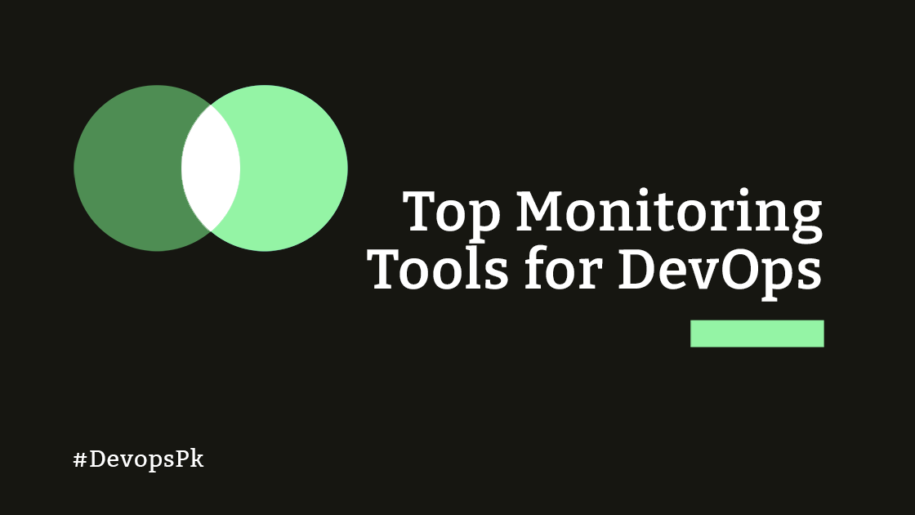DevOps ensures continuous improvements, high-quality development, quick delivery, and cost optimization in the software development industry. It bridges the gap between development and operations to create effective collaboration, combining the best engineering practices to implement successfully.
Table of Contents
The process requires a diverse set of engineers to support this practice within a company; these professionals are known as DevOps engineers. Implementing DevOps to an organization level requires a team of DevOps engineers who can expedite the delivery through automation, data analysis, and urgent release of the updates. Yet, the best practices require the right monitoring tools for DevOps for sustainable engineering tasks.
In this guide, we will cover the importance and types of monitoring in DevOps and the top monitoring tools that you can use to be successful.
What Is DevOps Monitoring?
In general, DevOps is the practice of monitoring, and as a DevOps engineer, it’s your responsibility to monitor everything from strategy to development, from processing to testing, and from implementations to operations. As a result, you can develop a comprehensive, real-time view of production applications and infrastructure.
DevOps monitoring is a continuous and automated practice to identify, track, and analyze each component during operations. With DevOps monitoring, you can get faster feedback and reach quickly and automatically to any changes required, enabling you to provide the best experience to your clients. It detects the problems, and the developers can resolve them as soon as possible – be it manually or automatically.
However, you need the right monitoring tools for DevOps to make the practice more efficient.
Types of Monitoring in DevOps
Monitoring in DevOps is continuous and automated; it comes in four forms, which are mentioned below:
1. Infrastructure monitoring
2. Application monitoring
3. Network monitoring
4. Cost monitoring
1. Infrastructure Monitoring
Infrastructure monitoring is the practice of detecting, tracking, and compiling data on the components of your DevOps tech stack. These components are a system’s database, servers, containers, virtual components, and other computing components.
Infrastructure monitoring itself is based on two types; agent-based and agentless infrastructure monitoring. In agent-based infrastructure monitoring, engineers install the software (known as agents) on each host. These agents acquire infrastructure metrics and send data to the monitoring tools for DevOps. However, agentless monitoring doesn’t require software. Instead, it uses NetFlow, SSH, SNMP, and other built-in protocols to relay infrastructure metrics for monitoring tools.
2. Application Monitoring
The process of tracking an application’s performance and availability is known as application monitoring. It aims to ensure the best user experience by monitoring your app’s SLA status, hardware utilization, platform overall performance, and user experience. In application monitoring, DevOps engineers can monitor server diagnostics, network traffic reports, error logs, failure diagnostics, and historical statistics.
3. Network Monitoring
Engineers use this type of monitoring to track the health and performance of network components, including routers, servers, and switches. With the use of network monitoring systems, you can easily track and troubleshoot bandwidth, uptime, and bottlenecks, such as failing routers and switches. With networking monitoring tools, engineers can detect any failure in the process before they create glitches in the user experience.
4. Cost Monitoring
Monitoring cost is essential. After all, you need a process that gives more value at a low cost. Cost monitoring allows you to identify resource usage, and with the use of cost intelligence tools, you can calculate the exact cost per unit and client or project. With this data, you can forecast the cost of goods and optimize resource utilization through different stages of DevOps.
Top DevOps Monitoring Tools
Are you looking for the right monitoring tools for DevOps? Here is a list of the best DevOps tools that will enable you to gear up for your work:
1. Sensu – One of the Top Monitoring Tools for DevOps
When it comes to top DevOps monitoring tools, Sensu remains at the top of the list. This tool is helpful in monitoring applications and infrastructure. Using this tool, you can measure the health and performance of your infrastructure, applications, and business KPIs.
Sensu integrates static, dynamic, and temporary infrastructure to solve challenges occurring in modern infrastructure platforms. Although this tool doesn’t provide SaaS, it allows you to track your system in the way you desire.
Features
- Notifications and alerts.
- Dynamic registration and de-registration of clients.
- It also operates with mission-critical applications or multi-tiered networks.
- It automates processes.
2. PagerDuty – Operations Performance Platform
PagerDuty is a DevOps monitoring tool designed to collaborate with operations staff to track the performance and health of software or apps. This tool works closely with the IT staff and addresses errors immediately before it affects operations.
Immediate alerts and notifications are important. When the production environment receives timely alerts from the development environment, operations staff can quickly detect, triage, and resolve the alerts. With the PagerDuty monitoring tool, you can ensure an easy-to-use and excellent response and alerting system in your production environment.
Features
- PagerDuty provides an intuitive alerting API, giving quick alerts to users.
- When there is no response from the alert system, the system automatically auto-escalates by its originally established SLA.
- It is an effective tool for scheduling and escalation.
3. Tasktop Integration Hub – A Single Platform for All Tools
Tasktop Integration Hub operates all the tools within a company into a single application, providing more value to the company. With this tool, your development environment can handle all delivery integration requirements through a single-point solution. No more tools are needed!
Tasktop Integration Hub is a powerful tool known as an all-in-one solution for all tools. It enables the development process to provide the right information to the right people at the right time.
Features
- With Tasktop Integration Hub, you can connect up to 45 fully functional tools without any hassle.
- It enables the developers to add new tools to the existing software faster.
- Your privacy is protected with this tool as it offers a secure login via a web-based interface.
- When this software monitors any change to artifacts, its runs at its lowest footprint, reducing the load on other tools.
4. Datical Deployment Monitoring Console
Datical deployment monitoring console is the right tool that you need to automate operations. It automatically detects the deployment status for each database across the organization and keeps you up-to-date. With this software, you can receive and record the SQL script execution events of the entire deployment procedure. This software automates deployment monitoring and database auditing, which reduces human errors.
Features
- It simplifies database auditing.
- It automatically monitors deployments and other errors.
- You can access deployment information whenever you want.
- This software simplifies the release process, making things convenient for both users and administrators.
5. Librato – A Platform for Data Monitoring and Visualization
Librato allows you to monitor and understand the metrics that can affect your business in every manner. This tool provides all the features that you need to monitor, in real-time, a solution, such as analyses, visualizations, and alerts on all the metrics. With this tool, you can transform and aggregate real-time data from any virtual source.
Features
- Librato offers a complete solution to monitor and analyze data.
- It provides numerous facilities for data monitoring and visualizations.
- It sends notifications on all the metrics.
- Users don’t need to install this tool.
- Librato offers an easy-to-use interface for its users.
- One can easily rely on its alerts, helping you to take necessary actions as per the situation.
6. Nagios – One of the reliable Continuous Monitoring Tools for DevOps
Nagios is considered one of the top DevOps tools for continuous monitoring. It is an open-source tool that allows users to monitor their systems, services, applications, and business process. You can get an immediate alert when something doesn’t go right with the infrastructure, and this tool can help you resolve the problem.
Features
- Nagios is an excellent tool for quick tests and is easy to configure for both clients and developers.
- With this tool, you can develop custom plug-ins and monitor the most crucial factor in the production environment.
- It sends immediate alerts when something goes wrong.
Conclusion
Software development is evolving with advancements and diversity. The monitoring system thus needs to be automated and work with the tools to meet the requirements and ensure quick and error-free deployments. DevOps monitoring enables teams to respond to alerts and reduce errors in order to provide the best experience at the user’s end. With the right monitoring tools for DevOps, you can track all the components of operations for quick and error-free deliveries.


Leave a Reply